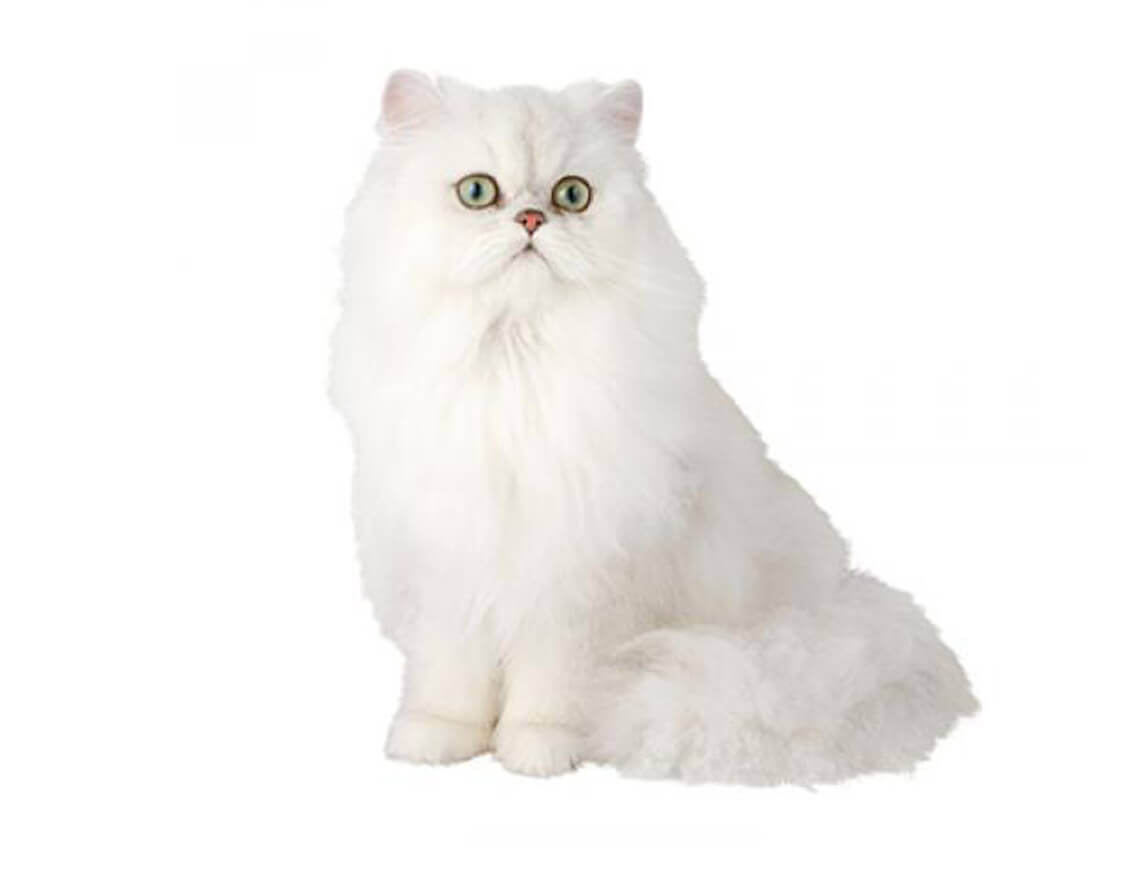
Chinchilla
The Chinchilla cat comes in one colour - white with green eyes. It has a broad head with small wide-set ears and a short open face. The eyes are large and round with brilliant colour. Although the Chinchilla cat tends to be more finely boned than most Persian cats, its legs are still fairly short, thick and strong. The tail is short and bushy. The coat is long, thick and luxuriant with a dense, soft undercoat.
The need-to-know
- Calm cat
- Sociable and dependent cat
- Quiet cat
- Average build cat breed
- Requires grooming everyday
- Needs some out-door space
- May require familiarisation before living with children
Personality

The Chinchilla cat is sweet tempered, loving and affectionate. Persian-types are generally known to be fairly inactive and quiet. The Chinchilla cat breed is said to be more outgoing and extrovert than most Persian cats.
History and Origins

Country of Origin: England
The Chinchilla cat breed is really a specific type of Persian cat. The breed comes in one colour - a pure white coat that is subtly tipped with black to produce a silvery sheen. Its emerald green eyes are distinctively lined with black. The Chinchilla cat breed was the first cat to have been selectively bred for a specific colour. It was first shown in 1894 in Crystal Palace, London.
Nutrition and Feeding

Every cat is unique and each has their own particular likes, dislikes, and needs when it comes to food. However, cats are carnivores and every cat must obtain 41 different and specific nutrients from their food. The proportion of these nutrients will vary depending on age, lifestyle and overall health, so it's not surprising that a growing, energetic kitten needs a different balance of nutrients in her diet than a less active senior cat. Other considerations to bear in mind are feeding the right quantity of food to maintain 'ideal body condition' in accordance with feeding guidelines and catering to individual preference regarding wet or dry food recipes.
Other Information

Health and common issues
The Chinchilla cat breed is a type of Persian and there is some overlap between the Chinchilla cat type and other Persian Longhairs, so many of the problems of the Persian cat can also occur in the Chinchilla cat breed. Because the head shape has been shortened and the face flattened, there can be jaw deformities which can lead to dental disease and potential problems with eating and drinking. Small nostrils and a soft palate which is too long can also lead to severe breathing problems. The tear ducts may not follow their natural path and so the eyes run and wet the face constantly – this can lead to skin rashes and sores on the face. The flat nature of face also increases the chances of eye disease. Persians can carry a gene that leads to kidney failure (called autosomal dominant polycystic kidney disease) through the development of cysts in the kidney. This condition was found in more than a third of all Persian cats and Exotic shorthaired cats in the 1990s when screening tests became available and although it seemed less prevalent in Chinchillas, it was still there. Using screening, breeders are now working to try to eradicate the problem – always ask the breeder to show the PKD certificates for the cats used to produce your kitten.
Best cat breeds for children
While this breed is not widely recognised as one of the best breeds for children, all cats are different and with the proper familiarisation may still be able to live with children.